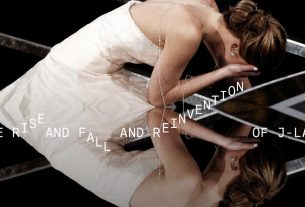The haters are right: Harry’s House simply isn’t the best album of the year.
After Harry Styles won the Grammy for Album of the Year last night, capping off a nearly four-hour ceremony with a low-energy finish, fans exploded with indignation online. Many were rooting for Beyoncé, whose dazzling album Renaissance won four other awards earlier in the night, giving her a record-breaking 32 total Grammys in her career. A devastating image circulated on Twitter: Beyoncé sitting in the audience during all four Grammy ceremonies where she was nominated for Album of the Year but lost out to a white musician. Other viewers pointed out that Bad Bunny’s Un Verano Sin Ti should have won for the way it shattered records all through 2022: It debuted at No. 1, spent 13 weeks at the top of the charts, and garnered nearly 400 million streams in the United States, making it Spotify’s top-streamed album of the year and the most-streamed Latin album ever.
The double snub merely reinforced what has become common sense: The voting bodies of awards shows routinely ignore groundbreaking Black or brown artists in favor of seemingly apolitical white ones. Harry’s House is pretty good — catchy, dreamy, and solidly built. But it’s not about anything except himself. Beyoncé’s Renaissance and Bad Bunny’s Un Verano Sin Ti are odes to specific communities and histories; they have cultural allegiances and political points of view. They are more interesting and adventurous because of it. But when it comes to the Grammys, the palatable neutrality of an album like Harry’s House, which is raceless only in the sense that it operates in a white, Western tradition without saying so, always wins.
Harry’s House album is meant to be an ode to home. As Harry Styles told Better Homes & Gardens ahead of the album’s release, he realized during the early stages of the COVID-19 pandemic that “that home feeling isn’t something that you get from a house; it’s more of an internal thing.” Theoretically, Harry’s House is his expression of that “internal thing.” But in practice, the album revels in pastel fantasies of domesticity and mild-mannered romance. On “Keep Driving,” he delivers an ode to brunch with the verse “Maple syrup, coffee / Pancakes for two / Hash brown, egg yolk / I will always love you.” In “Music for a Sushi Restaurant,” he portrays cooking with a loved one as the purest form of bliss.
Elsewhere, he writes even more hazily about locating his sense of home in another person. The vagueness of the chorus of “Late Night Talking” — “We’ve been doin’ all this late-night talkin”https://www.buzzfeednews.com/”Bout anything you want until the morning” — is rivaled only by the empty line that immediately precedes it — “If you’re feeling down, I just wanna make you happier, baby.” This is the vision of Harry’s House, idyllic and unspecific. Its narrative absences are filled in with the wonder that Harry Styles, international superstar and sex symbol, is crooning sweet nothings directly to you, the listener. His innocuous, omnipresent persona is the heart of the album; Styles is the subject, object, and source of meaning for his own work. He said so himself, in the same interview with Better Homes & Gardens: “I don’t know if there’s anything more navel-gazing than making an album. It’s so self-absorbed.”



